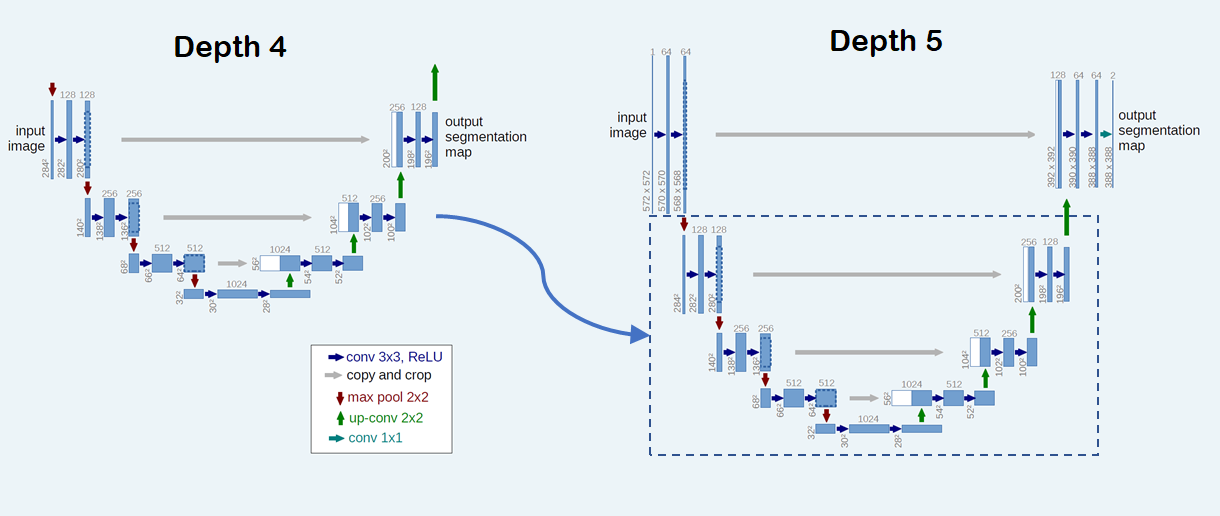Transfer Learning¶
Transfer learning can be realized in rmldnn by leveraging the checkpointing system described above,
and by making (hopefully small) changes to the network files. When training a network on dataset
 , enable checkpoint saving with
, enable checkpoint saving with
"checkpoints": {
"save": "./checkpoints_D1/"
"interval": 10,
}
Now, to transfer learning when training the same network with a new dataset  , load the model
saved during
, load the model
saved during  training:
training:
"checkpoints": {
"load": "./checkpoints_D1/model_checkpoint_100.pt",
"save": "./checkpoints_D2/"
"interval": 10,
}
Two main use cases can occur depending on the type of network:
1. Purely convolutional networks
In this case, the layers of the network are agnostic to the training sample sizes (as long as the tensors have the same rank) and, therefore, do not need to be changed when transferring learning. The only adjustment needed in the network file is the input size, usually defined in the first layer (e.g., InputLayer):
{
"class_name": "InputLayer",
"config": {
"batch_input_shape": [
null,
128,
128,
1
],
"dtype": "float32"
"name": "input_1",
},
"inbound_nodes": []
}
2. Networks with fixed-size layers
If the network contains layers whose configuration depends on the size of the training samples
(e.g., Dense), then the parameters for those layers cannot be transferred from a model trained
on a dataset with different size samples. In this case, those layers have to be renamed in the
network file and retrained with the new dataset. When loading the model, rmldnn will warn
about layers whose parameters cannot be transferred:
Loading model checkpoint from file: ./checkpoints_D1/model_checkpoint_100.pt
Skipping layer dense_128_1: not found in model
Skipping parameter dense_128_1.weight: not found in model
Skipping parameter dense_128_1.bias: not found in model
...
Application: multigrid training
One can leverage transfer learning to emulate the multigrid method for solving PDEs by training models of increasing resolution which are initialized from lower resolution ones. If the network is fully convolutional, a model trained at a certain resolution (data size) can be completely re-utilized when going to higher resolution (i.e., all layer parameters transferred). And even if the network changes at different resolutions, at least part of the model can perhaps be re-utilized.
For example, in order to train a UNet whose depth increases with resolution, one could simply add extra layers to the top part of the “U” and keep the bottom layers unchanged (see figure). The added layers will be trained from scratch, but the majority of the network (bottom part of the “U”) will be initialized from the model trained at lower resolution.
